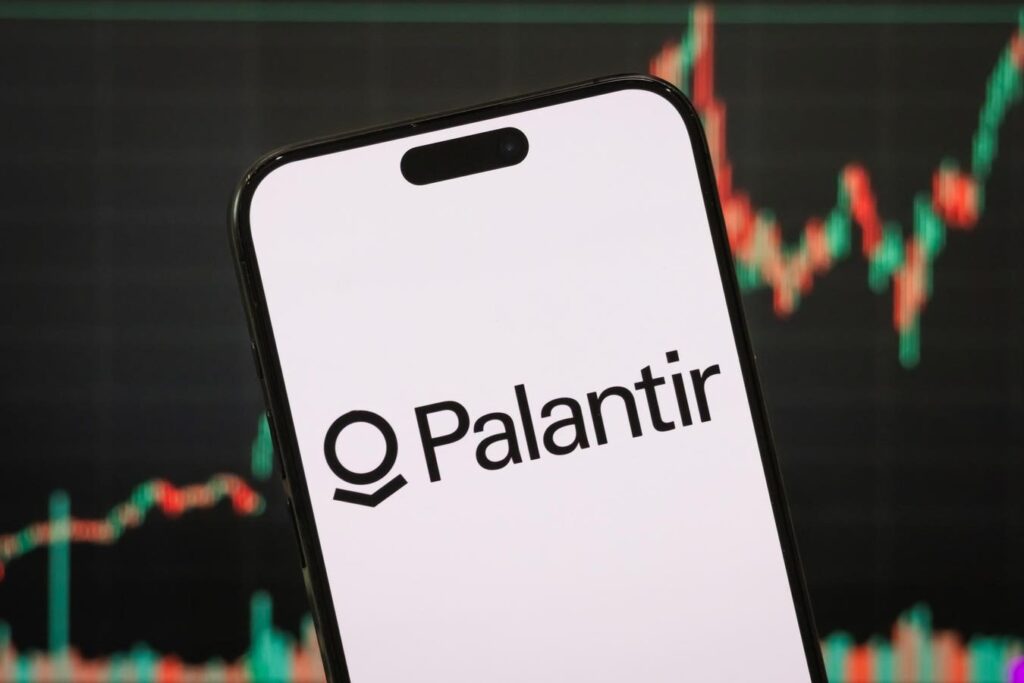Palantir Technologies Inc. (NYSE: PLTR) has exhibited remarkable stock market performance over the last year, fueled by an increase in demand for its AI-powered platforms in both government and commercial sectors. As of May 24, 2025, PLTR shares finished at $123.31 – marking a 63% increase year-to-date and an impressive 400+% rise over the past year. In just the past month, the stock surged by more than 40%, highlighting investor excitement regarding the company’s AI-driven capabilities. Palantir reported a 36% year-over-year revenue increase in Q4 2024, reaching $828 million, and has projected full-year 2025 revenues to fall between $3.74 billion and $3.76 billion. Although the company’s revenue growth and market momentum are undeniably robust, concerns about its valuation persist.
When contrasted with its peers, Palantir’s superior performance becomes even more pronounced. Tyler Technologies achieved a modest 12% year-to-date gain and a 20% increase over the past year, thanks to stable demand in public-sector software. Verint Systems has seen a decline of approximately 15% YTD and 25% over the past year due to scaling difficulties. Datadog, a formidable competitor in the cloud monitoring market, has risen 28% YTD and 45% over 12 months, while Alteryx has faced challenges, with its stock dropping 40% year-to-date and more than 60% over the year. In contrast, Palantir’s nearly parabolic rise reflects the market’s optimistic outlook on its AI potential – but also raises questions about sustainability. In this comprehensive evaluation, we explore whether one should Buy or Fear Palantir Technologies stock. That being said, if you are looking for upside with less volatility than from individual stocks, the Trefis High Quality portfolio offers an alternative, having outperformed the S&P 500 and generated returns exceeding 91% since its inception.
One of the most evident warning signs regarding Palantir stock is its valuation. With a price-to-sales (P/S) ratio of 101.5 (in comparison to the S&P 500’s average of only 2.8), PLTR is demanding a valuation premium that few companies can sustain over the long term. Investors are essentially paying over 100 times current revenues – a benchmark that suggests not only continued growth but nearly flawless execution. Our thorough examination of PLTR’s valuation details the various factors influencing its valuation.
Growth: Rapid and Robust
Palantir’s growth narrative is undeniably captivating. Over the last three years, the company has expanded its top line at an average annual rate of 23%. In the past twelve months, revenues escalated by 28.8%, from $2.2 billion to $2.9 billion. Its latest quarterly figures were even more impressive, showcasing a 36% year-over-year increase. These statistics illustrate Palantir’s increasing penetration into commercial sectors and its sustained strength in government contracts.
Profitability: Mixed but Improving
Although profitability metrics are not as spectacular, they still suggest a solid operating foundation. The operating income for the past four quarters amounted to $310 million, reflecting a modest 10.8% margin. Nevertheless, the company generated a robust $1.2 billion in operating cash flow, leading to a 40.3% OCF margin. The net income for the period came to $462 million, resulting in a moderate 16.1% net income margin. This combination indicates healthy cash generation, although there is potential for enhancing operational efficiency.
Financial Stability: Rock-Solid
Palantir’s balance sheet stands out as a significant strength. With only $239 million in debt and an enormous market cap of $273 billion, the company possesses a debt-to-equity ratio of just 0.1%. Additionally, it retains $5.2 billion in cash and equivalents – constituting 82.5% of its total $6.3 billion in assets. Such liquidity provides a robust buffer against market fluctuations and grants Palantir considerable strategic flexibility.
Downturn Resilience: A Cause for Concern
Despite its numerous strengths, Palantir has faced a concerning history of underperformance during economic downturns. In the wake of the 2022 inflation crisis, the stock tumbled 84.6%, while the S&P 500 decreased by only 25.4%. Similarly, during the COVID-19 pandemic, Palantir fell 53.9%, compared to the broader index’s 33.9% slump. Although the stock has since bounced back and exceeded its previous highs – achieving $130.18 in May 2025 – its past indicates susceptibility to macroeconomic challenges.
Strong Fundamentals, Expensive Entry Point
There is no doubt that Palantir is performing admirably and has established a leading role in AI-driven analytics. Its growth trajectory, cash generation, and financial stability situate it among the stronger contenders in the industry. However, its valuation metrics remain exceedingly high by any historical or sector benchmark. While momentum investors might continue to ride this wave, those with a value-driven strategy may regard PLTR as relatively expensive at current prices. As always, prospective investors should consider the company’s significant potential against the risks associated with purchasing a stock that commands a high price.
Investing in an individual stock like Moderna can present risks. Conversely, the Trefis High Quality (HQ) Portfolio, consisting of 30 stocks, boasts a history of comfortably outperforming the S&P 500 over the past four years. Why is that? Collectively, HQ Portfolio stocks delivered superior returns with reduced risk compared to the benchmark index, leading to a less turbulent investment experience, as evident in HQ Portfolio performance metrics.
Read the full article here
















